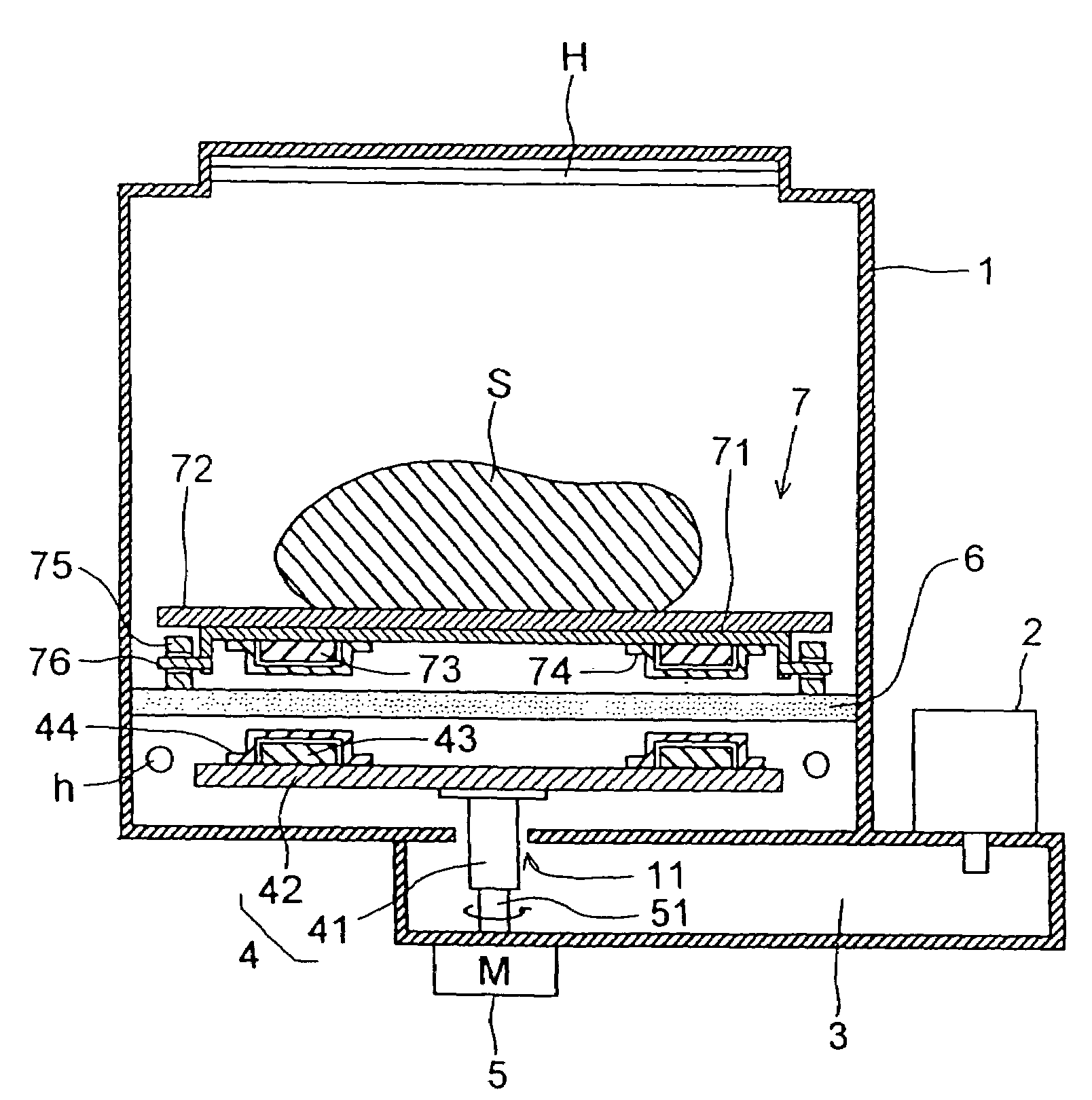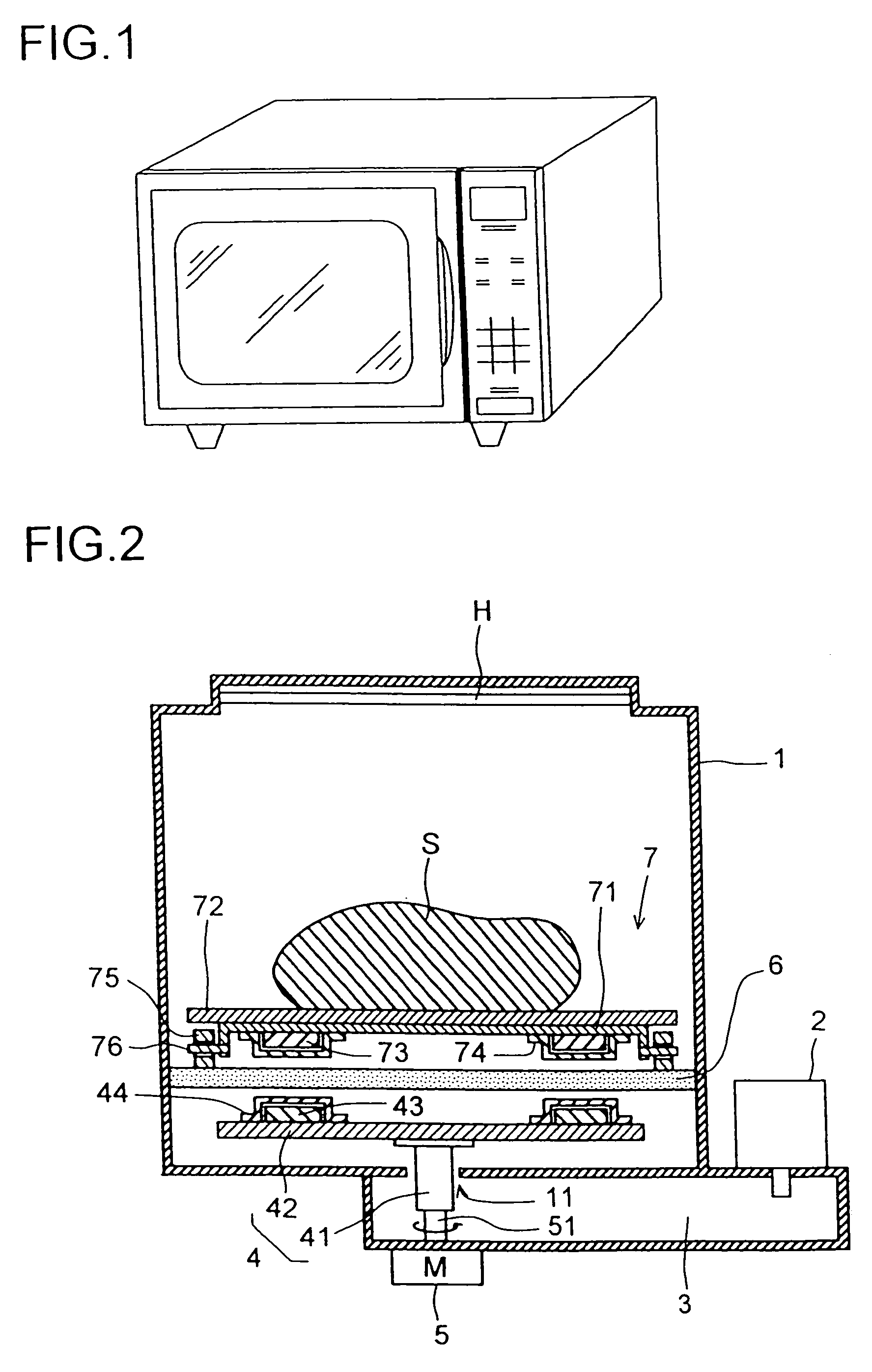High-frequency heating apparatus
a heating apparatus and high-frequency technology, applied in electrical equipment, microwave heating, electric/magnetic/electromagnetic heating, etc., can solve the problems of increasing the power consumption of the heater, the heating duration cannot be shortened, and the heating efficiency of the heater is increased, so as to achieve delicately controlled uniform heating and enhance the heating efficiency of the grill heating and oven heating
- Summary
- Abstract
- Description
- Claims
- Application Information
AI Technical Summary
Benefits of technology
Problems solved by technology
Method used
Image
Examples
first embodiment
[0109]First, the first embodiment will be described with reference to FIG. 28. If, in step S105 in FIG. 27, the heating means is found not to be high-frequency heating (i.e., if it is found to be heater heating), then the flow proceeds to step S110 in FIG. 28. In this step, the antenna stop time T1, which has thus far been rotating, is set. Next, in step S120, a stop timer is reset, and then, in step S130, the stop timer is started to count time. The antenna stop time T1 may be a fixed duration that is determined in advance, or may be a function of the set heating duration T0 or of the actual heating duration and the actual operation duration of the lower heater. By setting the antenna stop time T1 to be a function of the set heating duration T0 or the like, it is possible, when the set heating duration T0 is short, to shorten the antenna stop time T1 accordingly. This helps eliminate unnecessary power consumption. FIG. 31 shows an example where the stop time T1 is set to be a funct...
second embodiment
[0112]Next, the second embodiment will be described with reference to FIG. 29. If, in step S105 in FIG. 27 described earlier, the heating means is found not to be high-frequency heating (i.e., if it is found to be heater heating), then the flow proceeds to step S210 in FIG. 29. In this step, the antenna stop temperature S1 is set. Next, in step S220, the heating compartment temperature TS is sensed, and then the flow proceeds to step S230. In this step, whether or not the door is open is checked. If the door is found to be open, then, in step S240, the fourth relay switch SW4 is turned off to stop the rotation of the antenna 4. Then, the flow returns to step S230, where whether or not the door is open is checked again. So long as the door is found to be open, the operations in steps S230 and S240 are repeated. Thereafter, when the door 15 is found not to be open, the flow proceeds to step S250, where the fourth relay switch SW4 is turned on to rotate the antenna 4.
[0113]Next, in ste...
third embodiment
[0114]Lastly, the third embodiment will be described with reference to FIG. 30. If, in step S105 in FIG. 27 described earlier, the heating means is found not to be high-frequency heating (i.e., if it is found to be heater heating), then the flow proceeds to step S310 in FIG. 30. In this step, the antenna stop time T1 is set. Next, in step S320, the stop timer is reset, and then the flow proceeds to step S330, where the stop timer is started to count time. Next, in step S340, whether or not the door is open is checked. If the door is found to be open, then, in step S341, whether or not the rotary stage 7 is being used is checked. If the rotary stage 7 is found to be used, then, irrespective of whether or not the timer has reached the antenna stop time T1, in step S350, the fourth relay switch SW4 is turned off to stop the rotation of the antenna 4. Then, the flow returns to step S340, where whether or not the door is open is checked again. So long as the door is found to be open and ...
PUM
 Login to View More
Login to View More Abstract
Description
Claims
Application Information
 Login to View More
Login to View More - R&D
- Intellectual Property
- Life Sciences
- Materials
- Tech Scout
- Unparalleled Data Quality
- Higher Quality Content
- 60% Fewer Hallucinations
Browse by: Latest US Patents, China's latest patents, Technical Efficacy Thesaurus, Application Domain, Technology Topic, Popular Technical Reports.
© 2025 PatSnap. All rights reserved.Legal|Privacy policy|Modern Slavery Act Transparency Statement|Sitemap|About US| Contact US: help@patsnap.com



